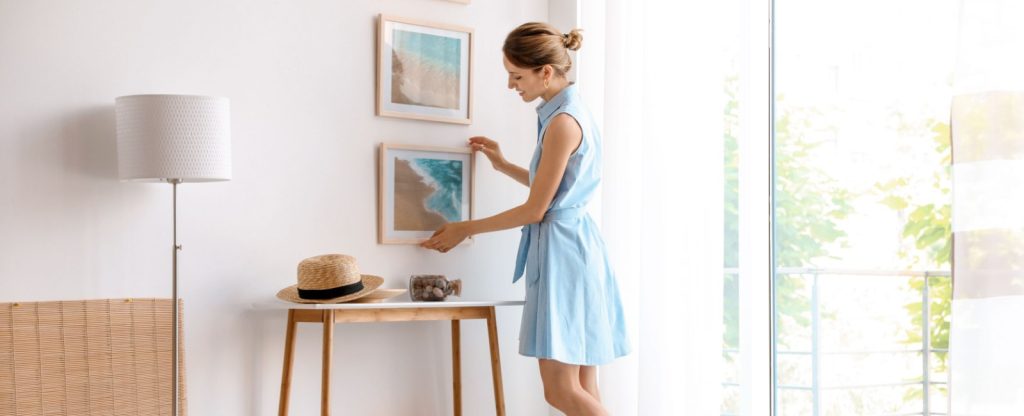Artwork has the power to transform a space, adding beauty, personality, and a touch of sophistication to your home. Whether you’re a seasoned art collector or just starting to explore the world of art, knowing how to choose and display artwork can elevate your interior design. In this blog post, we will guide you through the process of selecting and showcasing artwork in your home. From understanding your personal taste to considering the right size and placement, let’s dive into the art of decorating with art.
1. Understand Your Personal Taste:
Begin by exploring different art styles, mediums, and subjects to identify your personal taste. Visit art galleries, museums, and online platforms to familiarize yourself with various artists and art movements. Determine the styles that resonate with you and reflect your personality and aesthetic preferences.
2. Choose Art that Evokes Emotion:
Artwork should evoke emotion and resonate with you on a deeper level. Look for pieces that inspire joy, evoke nostalgia, or provoke thought. Whether it’s a vibrant abstract painting, a serene landscape, or a thought-provoking sculpture, select art that speaks to you and elicits an emotional response.
3. Consider the Scale and Proportions:
Consider the scale and proportions of the artwork in relation to the space where it will be displayed. A large-scale painting can serve as a statement piece in a spacious living room, while a smaller artwork can be a focal point in a cozy reading nook. Take measurements of the wall or the area you intend to hang the artwork to ensure it fits harmoniously.
4. Create a Cohesive Color Palette:
Consider the color palette of your space when selecting artwork. Look for pieces that complement or contrast with your existing color scheme. A well-chosen artwork can tie together the different elements in a room and create a sense of visual harmony. Experiment with color combinations that create a cohesive and pleasing aesthetic.
5. Mix and Match Styles:
Don’t be afraid to mix and match different art styles and mediums to create an eclectic and dynamic display. Pair contemporary artwork with traditional pieces or combine photography with abstract paintings. The juxtaposition of different styles adds visual interest and showcases your diverse artistic tastes.
6. Curate a Gallery Wall:
Create a gallery wall to display multiple artworks together. Choose pieces that share a common theme, color palette, or frame style. Experiment with different arrangements, such as a grid layout or an organic cluster, to create a visually pleasing composition. Ensure that the spacing between artworks is balanced to maintain a cohesive look.
7. Consider the Framing:
The right frame can enhance the impact of an artwork. Consider the style, color, and material of the frame to complement the artwork and the overall aesthetic of the room. Opt for classic and timeless frames or explore more unconventional options, such as floating frames or gallery-style frames, for a modern touch.
8. Pay Attention to Lighting:
Proper lighting is essential for showcasing artwork. Install adjustable spotlights or track lighting to highlight specific artworks. Avoid placing art in direct sunlight to prevent fading. Experiment with different lighting angles and intensities to create the desired ambiance and bring out the best in your artwork.
9. Mix Art with Other Decorative Elements:
Integrate artwork with other decorative elements in your space. Display sculptures, vases, or decorative objects alongside paintings or photographs to create a cohesive and curated look. Consider the scale, shape, and color of the artwork and the accompanying decor to ensure a harmonious composition.
10. Rotate and Refresh:
Keep your art display dynamic by rotating and refreshing the artworks periodically. This allows you to enjoy different pieces and prevents your space from becoming stagnant. Consider seasonal rotations or alternate pieces from your collection to keep your art display fresh and engaging.
Decorating with art adds a layer of creativity, personality, and visual interest to your home. By understanding your personal taste, considering scale and proportions, creating a cohesive color palette, and experimenting with different styles, you can curate a captivating art collection that reflects your individuality. Display artwork thoughtfully, paying attention to framing, lighting, and integration with other decorative elements. With these tips in mind, you can confidently select and showcase artwork to transform your home into a personal gallery that brings joy and inspiration to your everyday life.




